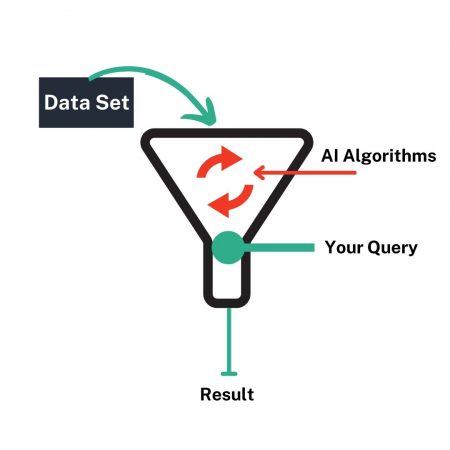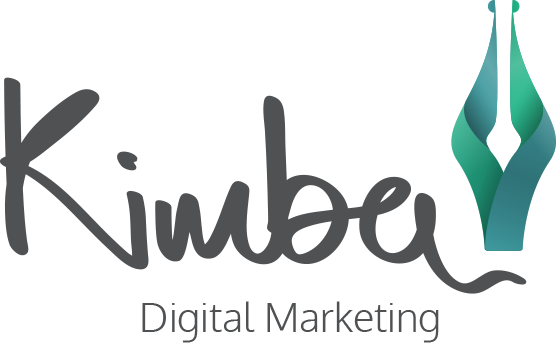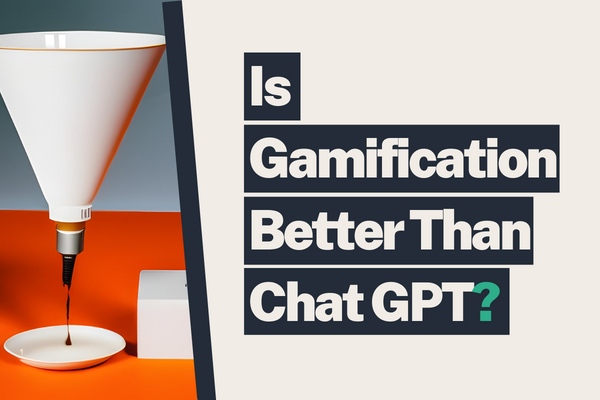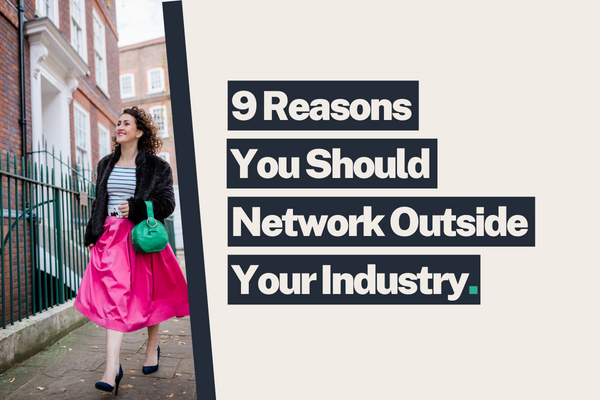Is Gamification better than Chat GPT?

It’s the trendy topic of the moment. Chat GPT. AI. Will it take our jobs? Will it take over all marketing positions? Will we need copywriters/artists/designers any more?
Honestly, at the moment, these things aren’t that sophisticated. You still need to have a good knowledge of what works in marketing, what is generic tosh and what is just plain bland. You need to have some expertise to get the AI to generate anything of any use.
We asked one particular AI to come up with a blog post about Gamification vs AI. This is the first paragraph of what it came up with:
In recent years, gamification and artificial intelligence (AI) have emerged as two powerful tools for engaging and motivating people, whether in the workplace, education, or other areas. While AI uses advanced algorithms to make predictions and automate tasks, gamification leverages game design techniques to motivate and engage people in non-game contexts. Both have their strengths and weaknesses, but when it comes to fostering long-term engagement and promoting behavior change, gamification has several advantages over AI. In this blog post, we’ll explore some of the reasons why gamification is better than AI for certain applications and how organizations can leverage gamification to achieve their goals.
It’s a little wordy and jargon filled, don’t you think?
and even the AI itself thinks gamification is better for ‘certain applications’
I don’t think they’re coming for our job just yet
Having said that, people with some expertise or a bit of knowledge in marketing or copywriting can use these tools to speed up their work and come up with some great stuff!
The first thing to say about AI is that at the moment it is ‘constricted’ by the data it’s been given to learn from. It can’t come up with anything entirely original.
As we’re currently all in – giving AI a try, we thought we’d test another AI, Text-To-Image from Canva to see if it could produce a diagram/image for us.

Which produced a result that really isn’t great.
In our opinion what makes for great results from AI at the moment are two main things:
- A clearly defined and exact query (or question) (which you can control)
- The data and algorithms being used by the AI being expansive, well annotated and understanding complex commands. (which you can’t control apart for picking different software)
The original brief that we entered could be better, and ‘creative’ ideas are much, much harder to generate as you asking the AI to create something new. Which is why we’ve got a floating funnel next to a box.
A very brief and quick representation of how AI and your questions works is in the image below.

The programmers place data into the top of the funnel, and waits for your query. Once it’s received it, it searches its data banks and looks to create the most appropriate answer to your question. And out pops your result!
When we say that an AI is constricted by the data it works with, we mean it’s only as good as the information it’s originally given – if it’s poor quality, or not there, then you won’t receive good results.
It’s like anything when you learn about a topic. You’ll give better answers to your friends/colleagues/clients/customers if:
- The question is easy to understand (or you interpret it correctly)
- You have lots of knowledge in that particular area.
So that’s all great, but you’ve got this far and you’re wondering to yourself two questions:
- Are you going to explain the title?
- Why should I care and how can you help?
Just like AI, Gamification is used to solve problems – whether it’s getting people to stay longer on courses and in memberships, or what we’ll focus on right now – getting more likes/shares/comments and increasing follower counts on social media.
And the best gamification projects (and social media includes this), marry psychology and games together to get results. Understanding why people want to engage with social media posts, how their personality traits can be used to make content and campaigns fun for them to engage with, along with marketing skills to understand how the platforms can be maximised to get the best results.
What was the last social media post you really liked? It probably evoked some emotion right? Whether it’s funny, heartfelt, made your feel smarter/more knowledgeable, it’s provoked a strong feeling.
And that is currently where AI falls down.
Great as a general knowledge base, not great at getting to know your audience, what makes them tick, your business and your personality.
Connecting your audience (and every single person’s audience is unique) to you and your business is something that ultimately only you can do.
In the past when we were Instagram trainers, we knew we could give good general advice, but the best advice came from working on courses with individuals to get to know them and their audience. What may work for one person, may not work for another.
As we previously said – AI only works with content that already exists which vastly limits creativity. Adding Gamification when you’re developing your own ideas and brainstorming new content means you can come up with new fun ideas when you are sick of saying the same thing over and over again!
Growing an audience is becoming ever difficult. Pay to play (i.e. paid ads, promoted posts) is the business model for most platforms – and as new businesses(and platforms) spring up the time you have to grab someone’s attention is increasingly small.
Which is where Gamification steps in. Interactive content that is researched and targeted specific to your audience, and their personality types (in terms of playing games).
Designed to encourage engagement and to get people excited by your content. So they come back again and again. Increasing your reach and telling the social media overlords that your posts are something that be shown higher in feeds, and to more people.
More reach, more engagement = more sales.
Using our AI friends again, we gave it a bit of info about our business and how we help people, and asked it to generate some social posts. This is an example of what we were given…
Did you know that any business can use gamification to boost sales and retention? At Kimba Digital, we’re experts in this field and can advise you on the best strategies to implement.
Generic and boring, very unlikely to generate much engagement.
Imagine if instead you used a gamified post (such as our gamification templates (hint, hint)), developed to create ‘fun’, then maybe you’ll gain some new engagement, lean about your audience along the way – and sales.
Plus as more people try and use AI for marketing material, you’ll be able to stand out with unique content ideas as social media is flooded with similar sounding posts.
Have you tried AI in your business? How have you found it? Let us know in the comments below!
P.S. Our gamified social media templates will help you to create social media posts that are fun, engaging and creative. Grab your packs here.
Have a gander at some of our other posts.
The Midnight Sun Game. Today I’m excited to tell you about a wonderfully unique human experience, The Midnight Sun Game. Let’s start
26 reasons to come to our networking event. Today I’m sharing the ABCs of why you should attend our networking event on
9 Reasons it’s a Good Idea to Network Outside of Your Industry. You might think that the only networking you should be




